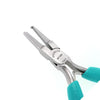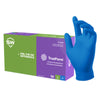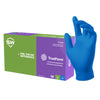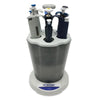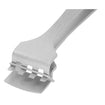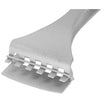- No products in the cart.
Everything You Need To Know About Nitinol Wires
Nov
09
2021
Nitinol is also known as nickel-titanium because it comprises titanium and nickel, with roughly the two elements making up an atomic percentage of 50/50. The unique thing about nitinol is that it can remember or change shape depending on temperature. This flexible metal, due to its properties, can be used for particular purposes in some rather unique circumstances.
If you break the name itself down the ‘Ni’ is the atomic symbol for nickel, and the ‘ti’ is the atomic symbol for titanium. The NOL stands for Naval Ordinance Laboratory. Nitinol was discovered in 1959 while scientists were trying to create an alloy that was heat resistant and corrosive resistant. Even though it was discovered in the late fifties to early sixties, Nitinol really didn’t take off until a few decades later when it became popular as a material used for engineering and product development.

What is Nitinol Wire Used For?
Nitinol is used widely in robotics and in medical device equipment due to its thermal shape memory and superelastic properties. It is really beneficial for applications used in tight spaces where no other device can reach. In robotics, Nitinol is used as a device for movement or control. Heat is applied to the Nitinol wire making the wire contract when heated and then relaxing once the heat is removed.
When it comes to medical devices, stents use Nitinol wire. The stent is cooled and fits into a catheter inserted through a vein. The stent is then released after it is positioned. At that point it returns to its original shape after it reaches body temperature and then carries out its purpose of holding the artery open.
It’s an ideal material for applications requiring an enormous allowance for flexibility and motion.
How to Shape Nitinol Wire
What’s interesting about Nitinol is that it has two unique characteristics. Those properties include the shape memory effect and pseudoelasticity or superelasticity. Shape memory is when Nitinol changes in size or shape with cooler temperatures or even room temperature and then recovers to its original shape when heated. Shape memory infers that the shape of the high temperature phase is remembered. With superelasticity, the metal undergoes a large change in shape or size and then returns to its original shape by removing the external load.
In high temperatures, Nitinol reaches its maximum stiffness. In low temperatures, the alloy becomes rubbery, flexible, and easy to bend. This is the point where the metal alloy can be deformed into a new or different shape. When heated to the temperature of the transformation, the metal reverts back to its original shape.
The temperature at which Nitinol’s memory kicks in from the high-temperature form can be adjusted. To adjust it, there must be changes made to the alloy composition and the heat treatment. With the stent, the transition temperature would be close to the temperature of the human body.
Two things to remember here is that the transformation is reversible by heating above the transformation temperature. Here, the Nitinol will revert back to its original form. The second thing to note is that this transformation is instantaneous in both directions.
How Do You Cut Nitinol Wires?
When cutting Nitinol wire, it’s essential to use the appropriate pair of hard wire cutters. You want to make sure the blades on the cutter are more robust than what they are cutting. The majority of Nitinol cutters are made of steel carbide and are considered hard-wire cutters.
Lab Pro offers a great selection of hard wire cutters such as precision hard wire cutters, round head hard wire cutters, taper head hard wire cutters, and oval head hard wire cutters. Most of these Nitinol cutters are made from the highest grade of carbon steel and feature tungsten carbide inserts. The hard cutting edges are designed for cutting most types of medical and hard wires. They have ESD-safe handles, stainless steel springs, and a specially designed joint system.
Lab Pro offers a large variety of Nitinol Hard wire cutters for all types of medical device manufacturing applications. For over 40 years, Lab Pro Inc. has been committed to delivering the highest quality chemicals, lab equipment, distance learning kits, lab supplies, and cleanroom PPE apparel to medical device companies and laboratories worldwide. To learn more, visit the biggest Lab Supply showroom in California, or contact us online or at 888-452-2776.

















